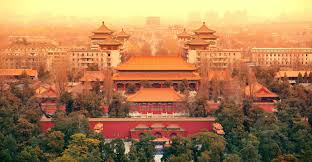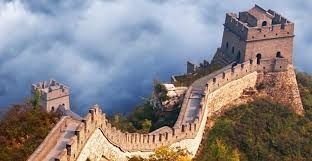Why is Russia not the most inhabited country in the world if it is the largest?

China is the largest in the world and one of the largest. Debat to the cracimiento económico de las ltimas décadas, a su poderío militar y a su influencia geoestratégica y política, es one of the probables potencias of the siglo XXI.
China is the most populated country on Earth: about 1.4 billion people, which is equivalent to one third of the Asian population and one fifth of the world total.
Currently the population growth is low: the fertility rate is 1.8 children per woman. The reduction in the number of births is due to birth control in recent decades. In 1979, when the country reached almost 1,000 million inhabitants, the authorities decided to implement a tough anti-birth policy, in order to promote economic development, optimize resources and increase the well-being of the population. A campaign was then launched with the slogan "a couple, a child" and those families who had more than one child were punished with fines, sometimes equivalent to more than three years of parent's salary, and, in some cases, cases, even sanctioned with dismissal.
The main objective of this anti-birth policy has been reached and since 2002 it has been more moderate and more permissive, it was abolished by the big cities in 2004. At the moment, the growth rate of the Chinese population is 0.7%.
But it also had other repercussions, mainly a strong imbalance between the male and female population, which condemns thousands of men to singularity. On the other hand, there is a rapid aging of the population. In addition, millions of sterilizations and forced abortions were made; There have been abandonment of children, trafficking in children and family dissimulation, as parents hide their children for not being fined. It is estimated that over 20 million girls have been sacrificed by parents who wanted a boy
With almost 10 million km², China is the fourth largest country in the world. The population is concentrated in the floodplains and coastal plains, where the 500 inhabitants / km2 are exceeded. The inland lands are less populated, in particular the plateau of Tibet and the deserts of Gobi and Takla frlakan, are practically uninhabited.
Almost three quarters of the population lives in the countryside. The main cities are on the coast: Guangzhou (Canton), Tianjin (Tianjin), Hong Kong and Chongquing (Chungking), Beijing (Beijing) and, above all, Shanghai.
Considerations on the political evolution of the Chinese. - The Chinese had enjoyed a patriarchal government until modern times. The emperor was the father of an immense family whose members were his subjects, and the Chinese, especially the traditionalist, was used to such a system of government. The general backwardness and lack of culture kept them in the dark about what was happening in the world and had no reformist wishes. It is not strange, therefore, that the implementation of democratic procedures does not achieve the success expected by its supporters.
What about principles based on individual rights could have acceptance between people who are socially and politically nothing but family members, without anything to highlight their individuality? The educated and Europeanized Chinese had assimilated these ideas, but their number was insignificant compared to the mass of the people.
Moreover, the misery and general difficulties presented by the loser as the main problem of subsistence increasingly difficult to reach and this discontent of the masses, at the edge of despair, was used by the followers of communism, to make that great and tormented country in one of the most powerful tools of his politics.
LANGUAGE: The Chinese language is monosyllabic, which is divided into many dialects that reach great differences. There is, however, a distinction between the main forms, with the Chinese high and low called the first, send the dialect, and the second is dominant in central and southern China. Used as the official across the country for administrative purposes is the Beijing dialect and for cheaper foreign trade relations is spoken in Guangzhou.
Dialects vary in the number of words and how to pronounce them. But the real difficulty of the Chinese language is in his writing; it is syllabic and is represented by signs of ideological and phonetic meaning, possessing up to 40,000; although for the current uses it does not exceed 10,000 the number needed. In any case, the minimum number of signs that must be checked to be understood is 3,000. The signs are arranged vertically and in order from top to bottom and from right to left the vertical lines. But the greatest difficulty is in his phonetic interpretation, different in every dialect, not only in the pronunciation, but in tone to be given to the recitative.
All the difficulties enunciated require the learning of the same language absorbs a lot of time and the attention on the Chinese sects, and as language and, above all, its graphic expression is the indicated means for the acquisition of knowledge, it is easily imaginable that more difficult it is the possibility of the closed idiomatic domination will be the roads of knowledge.


#introduceyourself/#introducemyself
The “introduceyourself/introducemyself” tag is for creating one introductory post that tells us about you. Users are encouraged to use this tag exclusively for that, and not to reuse it.